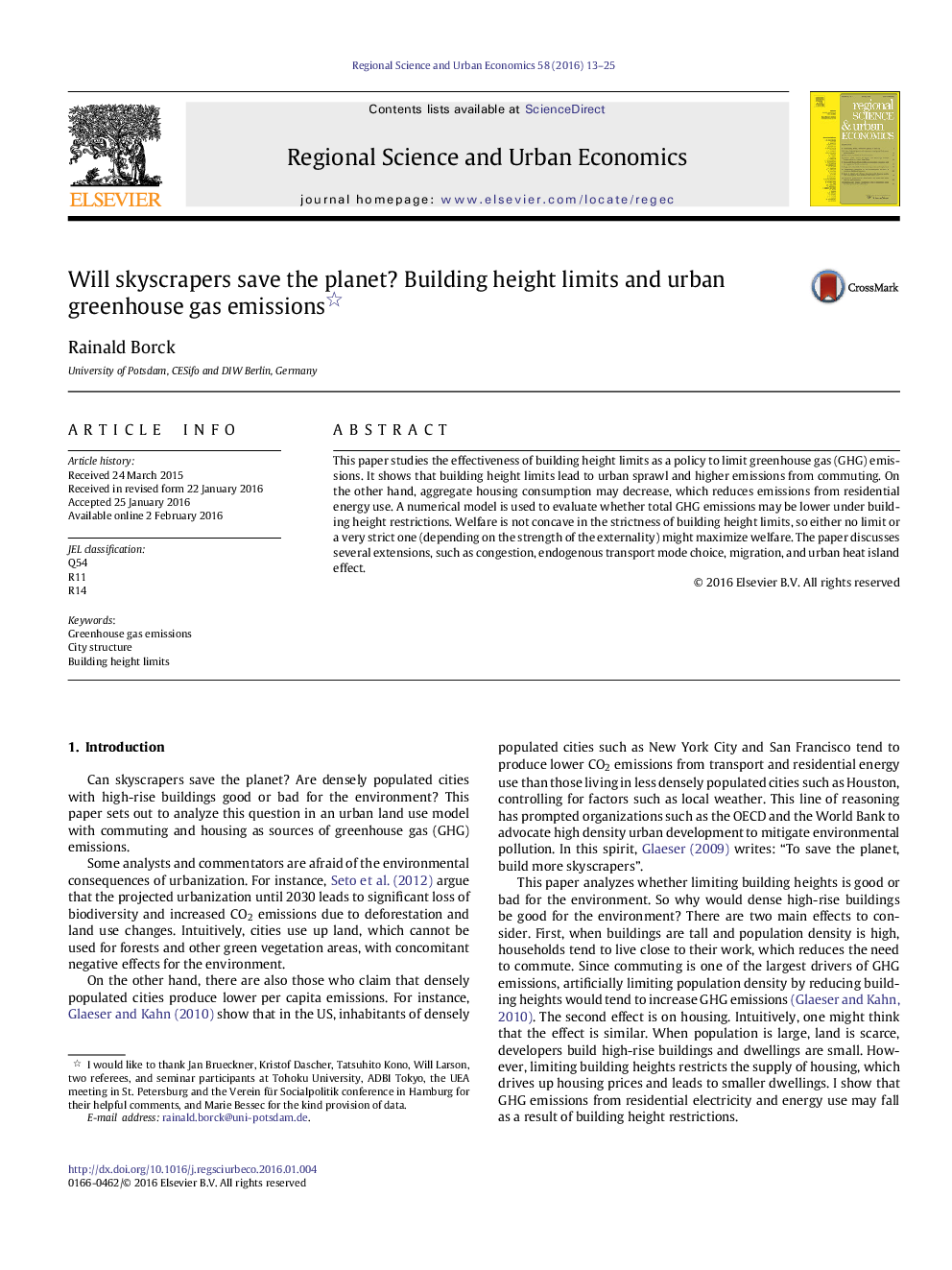| Article ID | Journal | Published Year | Pages | File Type |
|---|---|---|---|---|
| 980460 | Regional Science and Urban Economics | 2016 | 13 Pages |
•The paper shows that building height limits may or may not reduce urban greenhouse gas (GHG) emissions.•Building height limits increase emissions from commuting, but may reduce emissions from residential energy use.•The model is calibrated and simulated numerically. A variety of extensions are discussed.
This paper studies the effectiveness of building height limits as a policy to limit greenhouse gas (GHG) emissions. It shows that building height limits lead to urban sprawl and higher emissions from commuting. On the other hand, aggregate housing consumption may decrease, which reduces emissions from residential energy use. A numerical model is used to evaluate whether total GHG emissions may be lower under building height restrictions. Welfare is not concave in the strictness of building height limits, so either no limit or a very strict one (depending on the strength of the externality) might maximize welfare. The paper discusses several extensions, such as congestion, endogenous transport mode choice, migration, and urban heat island effect.
